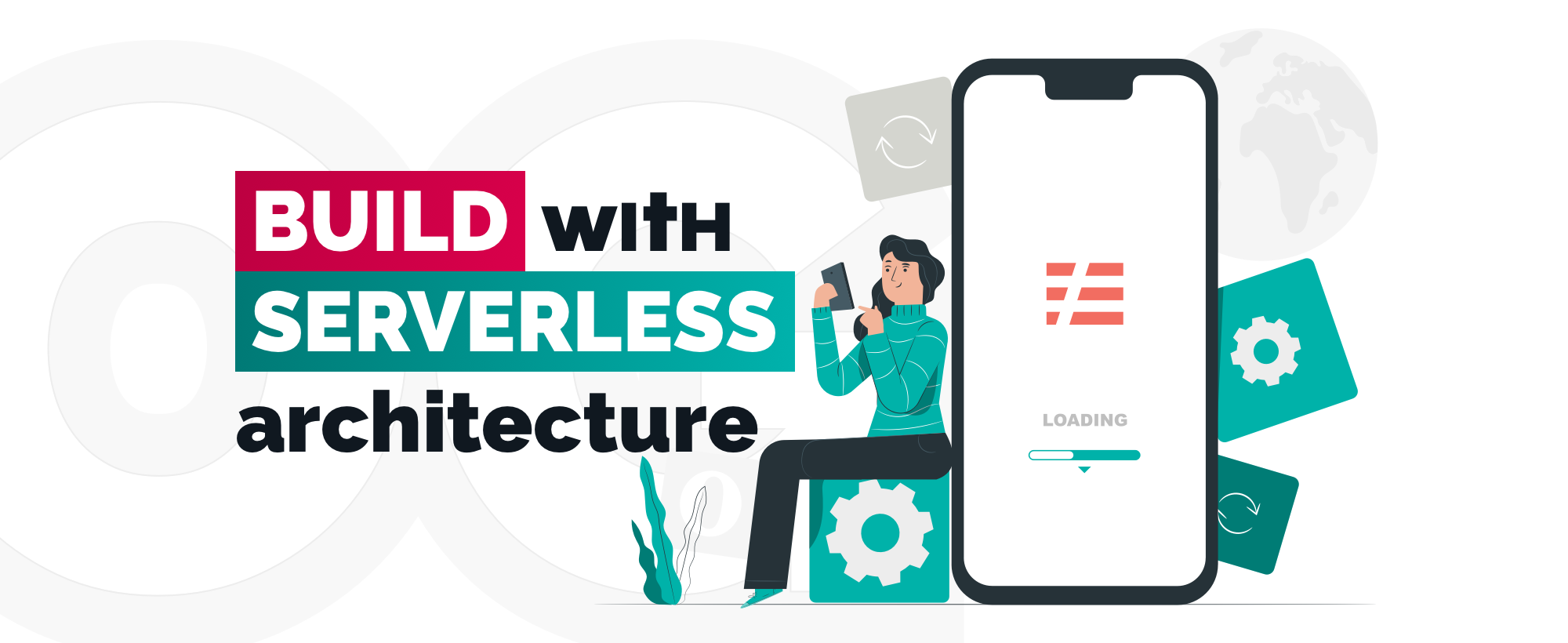AWS Serverless Architecture: Expert Guide to Full-Stack Apps


Hanzala
15 min read ⋅ Sept 30, 2024
In today’s fast-paced digital landscape, serverless architecture has emerged as a game-changer for developers and businesses alike. Amazon Web Services (AWS) leads the charge with its robust suite of serverless services, enabling rapid development and deployment of scalable, cost-effective applications. This comprehensive guide will delve into the intricacies of AWS serverless architecture, demonstrating how to leverage these powerful tools to create and deploy full-stack applications with ease and efficiency.
Table of Contents
- Introduction to AWS Serverless Architecture
- Core AWS Serverless Services
- Building a Serverless Backend
- Crafting a Serverless Frontend
- Data Persistence in Serverless Applications
- Implementing Authentication and Authorization
- Serverless DevOps and CI/CD
- Monitoring and Troubleshooting
- Best Practices and Optimization Techniques
- Real-World Case Study
- Conclusion
Introduction to AWS Serverless Architecture
Serverless architecture is a cloud computing execution model where the cloud provider dynamically manages the allocation and provisioning of servers. AWS’s serverless platform allows developers to build and run applications without thinking about servers, focusing solely on individual functions in their application code.
Key benefits include:
- Automatic scaling
- Pay-per-use pricing
- Reduced operational management
- Faster time to market
Core AWS Serverless Services
AWS Lambda
At the heart of AWS serverless computing is Lambda, which lets you run code without provisioning or managing servers. Key features include:
- Support for multiple programming languages (Node.js, Python, Java, Go, etc.)
- Automatic scaling and high availability
- Integration with other AWS services
Amazon API Gateway
API Gateway is a fully managed service that makes it easy for developers to create, publish, maintain, monitor, and secure APIs at any scale. It acts as the “front door” for applications to access data, business logic, or functionality from your backend services.
AWS Step Functions
Step Functions allows you to coordinate multiple AWS services into serverless workflows. It’s particularly useful for building complex, distributed applications with visual workflows.
Amazon EventBridge
EventBridge is a serverless event bus that makes it easier to build event-driven applications at scale using events generated from your applications, integrated SaaS applications, and AWS services.
Building a Serverless Backend
Creating a serverless backend involves several key steps:
- Define Lambda Functions: Write individual functions to handle specific tasks or business logic.
import json
def lambda_handler(event, context):
# Your business logic here
return {
'statusCode': 200,
'body': json.dumps('Hello from Lambda!')
}- Set Up API Gateway: Create RESTful or WebSocket APIs to trigger your Lambda functions.
- Implement Service Integration: Use Step Functions to orchestrate complex workflows involving multiple Lambda functions and AWS services.
- Handle Events: Utilize EventBridge to manage application state changes and trigger appropriate responses.
Crafting a Serverless Frontend
For the frontend, AWS offers several services that complement serverless backends:
Amazon S3 and CloudFront
Host your static website content on S3 and use CloudFront for global content delivery.
AWS Amplify
Amplify provides a set of tools and services for building scalable full-stack applications, including:
- Authentication
- API (REST and GraphQL)
- Storage
- CI/CD
Example of setting up a React app with Amplify:
amplify init
amplify add api
amplify pushData Persistence in Serverless Applications
Amazon DynamoDB
DynamoDB is a fast and flexible NoSQL database service for serverless applications. It provides:
- Single-digit millisecond latency at any scale
- Built-in security and in-memory caching
- Automatic scaling
Example of a DynamoDB operation using AWS SDK:
const AWS = require('aws-sdk');
const docClient = new AWS.DynamoDB.DocumentClient();
exports.handler = async (event) => {
const params = {
TableName: 'Users',
Item: {
userId: event.userId,
name: event.name
}
};
await docClient.put(params).promise();
return { statusCode: 200, body: 'User added successfully' };
};Amazon Aurora Serverless
For relational database needs, Aurora Serverless provides on-demand, auto-scaling configuration for MySQL and PostgreSQL-compatible databases.
Implementing Authentication and Authorization
Amazon Cognito
Cognito provides authentication, authorization, and user management for web and mobile apps. It scales to millions of users and supports sign-in with social identity providers.
Example of setting up Cognito in a Lambda function:
const AWS = require('aws-sdk');
const cognito = new AWS.CognitoIdentityServiceProvider();
exports.handler = async (event) => {
const params = {
ClientId: 'your-app-client-id',
Username: event.username,
Password: event.password
};
try {
const result = await cognito.signUp(params).promise();
return { statusCode: 200, body: 'User registered successfully' };
} catch (error) {
return { statusCode: 400, body: error.message };
}
};Serverless DevOps and CI/CD
AWS SAM (Serverless Application Model)
SAM is an open-source framework for building serverless applications. It provides shorthand syntax to express functions, APIs, databases, and event source mappings.
Example SAM template:
AWSTemplateFormatVersion: '2010-09-09'
Transform: AWS::Serverless-2016-10-31
Resources:
HelloWorldFunction:
Type: AWS::Serverless::Function
Properties:
CodeUri: hello-world/
Handler: app.lambda_handler
Runtime: python3.8
Events:
HelloWorld:
Type: Api
Properties:
Path: /hello
Method: getAWS CodePipeline and CodeBuild
These services can be used to create a fully automated CI/CD pipeline for your serverless applications.
Monitoring and Troubleshooting
Amazon CloudWatch
CloudWatch provides monitoring and observability for your serverless applications. Use it to collect and track metrics, collect and monitor log files, and set alarms.
AWS X-Ray
X-Ray helps developers analyze and debug production, distributed applications, especially those built using a microservices architecture.
Example of adding X-Ray tracing to a Lambda function:
from aws_xray_sdk.core import xray_recorder
@xray_recorder.capture('## custom_subsegment')
def lambda_handler(event, context):
# Your function logic hereBest Practices and Optimization Techniques
- Function Sizing: Keep Lambda functions small and focused on a single task.
- Caching: Utilize caching mechanisms like ElastiCache or CloudFront to improve performance.
- Asynchronous Processing: Use SQS or SNS for decoupling and async processing.
- Cold Start Mitigation: Implement strategies like provisioned concurrency to reduce cold start times.
- Security: Follow the principle of least privilege when setting up IAM roles.
Real-World Case Study
To illustrate these concepts, let’s consider a real-world scenario: building a serverless e-commerce platform.
- User Authentication: Implement Cognito for user sign-up and login.
- Product Catalog: Store product data in DynamoDB, with Lambda functions to handle CRUD operations.
- Order Processing: Use Step Functions to coordinate order placement, payment processing, and inventory updates.
- Frontend: Build a React app hosted on S3 and distributed via CloudFront.
- API Layer: Set up API Gateway to handle RESTful requests from the frontend.
- Search Functionality: Implement Elasticsearch Service for advanced search capabilities.
- Monitoring: Use CloudWatch and X-Ray to monitor application performance and troubleshoot issues.
This architecture demonstrates how various AWS serverless services can be combined to create a scalable, robust full-stack application.
Conclusion
AWS serverless architecture provides a powerful set of tools for building modern, scalable applications. By leveraging services like Lambda, API Gateway, DynamoDB, and others, developers can focus on writing code that delivers business value, rather than managing infrastructure.
As an experienced AWS engineer, I’ve successfully implemented these architectures for various clients, ranging from startups to enterprise-level organizations. My expertise includes:
- Designing and implementing serverless architectures
- Optimizing performance and cost efficiency
- Implementing robust security measures
- Setting up automated CI/CD pipelines
- Troubleshooting and resolving complex issues in serverless environments
If you’re looking to leverage AWS serverless technologies for your next project or need assistance optimizing your current serverless applications, I’d be happy to help. My approach involves:
- Assessment: Thoroughly evaluating your current architecture or project requirements.
- Design: Creating a tailored serverless architecture that aligns with your business goals.
- Implementation: Efficiently building and deploying your serverless application.
- Optimization: Continuously monitoring and fine-tuning for optimal performance and cost-effectiveness.
- Knowledge Transfer: Ensuring your team is equipped to maintain and evolve the serverless infrastructure.
Feel free to reach out to discuss how we can harness the power of AWS serverless to drive your business forward.
Hanzala — Software Developer🎓
Thank you for reading until the end. Before you go:
- Follow me X | LinkedIn | Facebook | GitHub
- Reach Out hi@hanzala.co.in